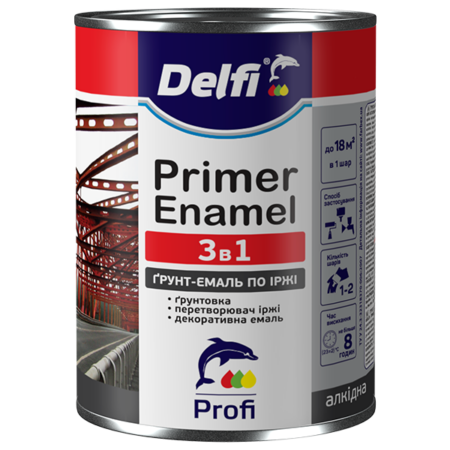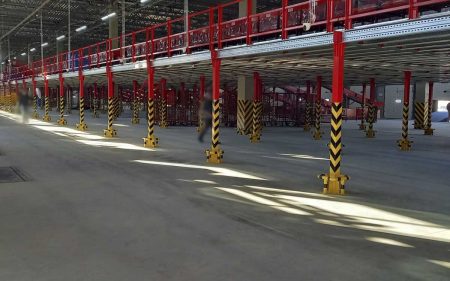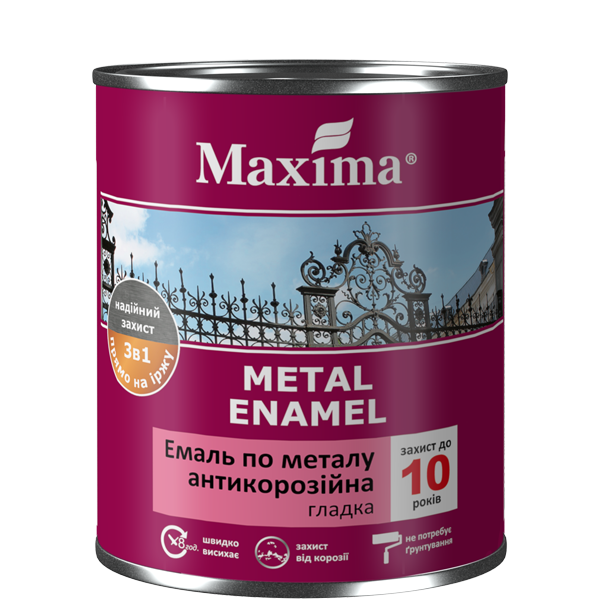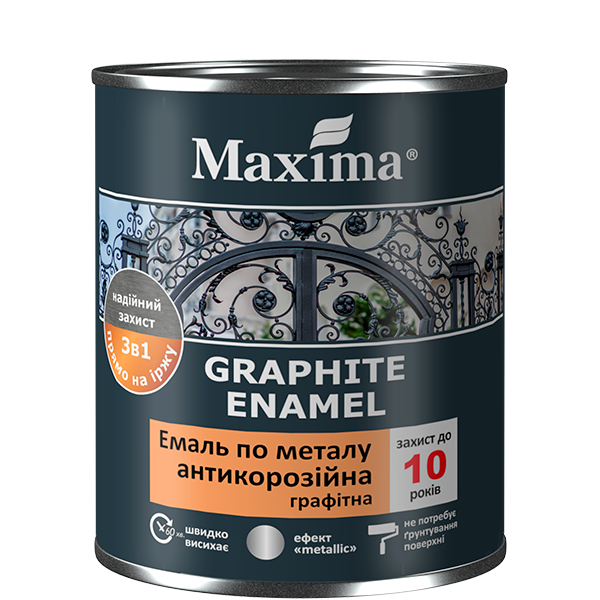
Delfi
Anticorrosion primer-enamel 3 in 1
Specification
- multi-purposed: it contains in its formula anticorrosion protection, adhesive primer, and decorative enamel
- it creates a durable protective coat, which is weatherproof and water-resistant
- it is resistant to mechanic load and repeated washing
Sphere of application
It is intended for anti-corrosion protection and decorative finishing of metal surfaces (construction, reinforced concrete, farming machines, metal roofs, fences, drain pipes, metal furniture and doors, working tools, etc.) and also wooden, concrete and other surfaces indoors and outdoors.
Technical data
| Consumption standard of 1 layer | 50-100 g/m2, depending on the type of surface and way of application. |
| Solvent | solvent TM DekART or odorless solvent ТМ Maxima, 10% maximum of the total primer-enamel weight. |
| Application | Apply with a brush, a roller or a spraying gun. |
| Drying period (23 °С, 50% RH) | 8 hours. Drying period increases if the temperature is getting down and relative air humidity is getting higher. |
| Solids content (DSTU ISO 3251) |
> 60 % |
| Density (DSTU ISO 2811-1) | 1,2 ±0,1 g/cm3 |
| Gloss (DSTU ISO 2813) | glossy - > 60 GU (at 60º) matt - > 10 GU (at 60º) |
| Hardness (DSTU ISO 1522) | > 35 sec, Konig pendulum. |
| Non-volatile matter by volume (DSTU ISO 3233) |
65±5 % |
| VOC content (ISO 11890) | < 450 g/l |
| Warranty period | 24 months from the date of manufacturing. |
| Packaging | 0,9 kg, 2,8 kg, 20 kg, 45 kg |
Gloss
Color















Application instruction
*
1. Surface preparation
It is recommended to make the surface dry. Clean the surface carefully from dust, grease and rests of salt and other dirt for more quality coating.
Clean metal surfaces shall be treated with sandpaper for better adhesion. Abrasive dust shall be removed. Clean surface shall be degreased with a solvent.
Previously coated metal surfaces shall be cleaned from loose paint products. Coats with weak adhesion shall be pealed till hard surface mechanically (a scraper, a wire brush), thermally (hot air fan, IR radiation) or chemically (paint removing solutions). Use chemical solutions for rust removing before mechanical removal for the best results. Clean the surface thoroughly from salt deposits and other dirt with a wire brush or hard-grained sandpaper. Remove abrasive dust and degrease the surface with a solvent.
Previously coated wooden surfaces shall be cleaned from paint products, which can be pealed in mechanical (a scraper, a wire brush), thermal (hot air drier, IR radiation) or chemical (paint removing solutions) way. Treat the surface with sandpaper and remove abrasive dust.
2. Priming
Metal surfaces need no advanced undercoating.
Wooden surfaces shall be undercoated with alkyd wood protective primer TM Delfi. Make sure that the wooden surface is clean and completely dry before applying the primer.
The surfaces, which were not previously undercoated with a mix of primer-enamel and solvent in ratio of 1:1.
3. Applying of finishing layer
Stir the primer-enamel thoroughly before use. The primer-enamel is ready to use. Apply primer-enamel in 1-2 layers. Dilute primer-enamel with a solvent if necessary. Apply each next layer in 24 hours. Perform application at the temperature of air and the surface from +10 ºС till +35 ºС and relative air humidity less than 80%. Do not apply the primer-enamel under direct sunlight, strong wind and precipitation. Applied coat shall not be affected with precipitation during 24 hours. Complete hardening and achieving of its properties shall be in 14 hours.
4. Tool cleaning
Clean tools with a solvent and then with warm water with detergents if necessary.
You may also be interested in
References

Для захисту металоконструкцій від корозії використовувалась Ґрунт-емаль по іржі 3 в 1 Delfi червоного, жовтого …
Flow calculator
Consumption standard of 1 layer
When calculating the area to be painted, you need to subtract the area that will not be painted. (windows, doors, etc.)
Paint consumption may vary depending on dilution and uniformity of application of the paint.



